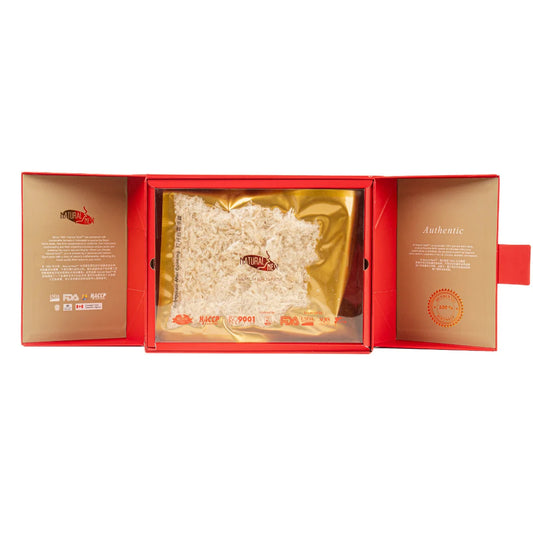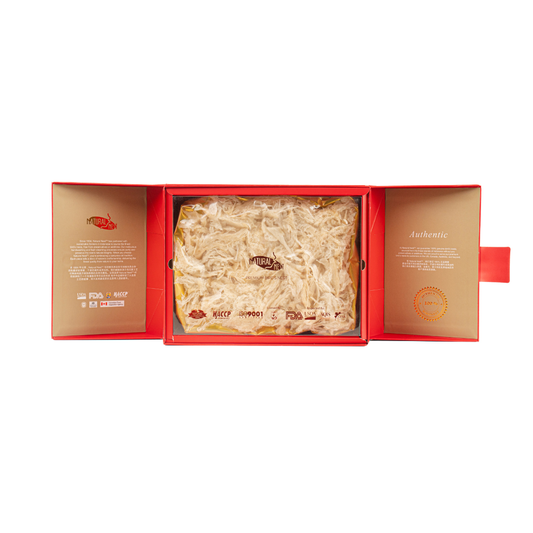Bird’s nest soup is a culinary treasure with a rich history dating back hundreds of years, particularly in Chinese cuisine. Known for its delicate flavor and numerous health benefits, it was originally enjoyed by emperors and royalty for its luxurious nature and believed to have rejuvenating properties. Over time, this traditional dish has undergone various transformations, with modern versions adapting the recipe to fit contemporary tastes and lifestyles. In this article, we’ll explore how bird’s nest soup has evolved from its traditional roots to the modern variations we enjoy today.
Traditional Bird’s Nest Soup: The Royal Delicacy
The origins of bird’s nest soup can be traced to ancient China, where it was first consumed by emperors and the wealthy elite. Traditional bird’s nest soup was a labor-intensive dish, crafted using carefully harvested nests from edible-nest swiftlets (Aerodramus fuciphagus), which are prized for their saliva-based nests. These nests were collected from caves or specially constructed birdhouses, a process that required great care to avoid damaging the delicate nests.
In its traditional form, the recipe for bird’s nest soup was simple, focusing on the purity of the nest itself. The soup typically featured only three key ingredients: the bird’s nest, rock sugar (or sometimes honey), and water. The nest would be meticulously cleaned to remove feathers and impurities, then gently simmered in water to extract its collagen and amino acids. The result was a delicate, slightly sweet, and highly nutritious broth. The dish was often served as a tonic, believed to promote skin health, improve immunity, and boost overall vitality.
Traditional recipes often emphasize minimalism, preserving the natural flavors and textures of the nest while ensuring the nutrients remain intact. The focus was always on the quality of the bird’s nest, with no need for additional seasonings or embellishments. This type of bird’s nest soup was considered a luxury, enjoyed during special occasions or as part of a health regimen to promote longevity and beauty.
Modern Bird’s Nest Soup: Innovation Meets Tradition
As bird’s nest soup gained popularity outside of China, particularly in Southeast Asia, modern versions began to emerge. Today’s recipes often incorporate more diverse ingredients and flavors, making the soup more accessible to a wider audience while retaining its original health benefits. With the rise of global cuisine and the demand for convenience, modern bird’s nest soup has evolved into a dish that is quicker to prepare and adaptable to different tastes.
One of the key changes in modern bird’s nest soup is the introduction of new flavors and ingredients. While traditional recipes focus on the purity of the nest, modern versions may include additional elements such as coconut milk, ginseng, goji berries, or other herbs and spices known for their health-boosting properties. These additions not only enhance the flavor of the soup but also provide additional nutrients, making the soup even more of a health powerhouse.
Modern bird’s nest soup is also often more convenient. Pre-cleaned, ready-to-cook bird’s nests have become widely available, reducing the time and effort involved in preparing the soup. Furthermore, many modern recipes use bird’s nest extract or ready-made bird’s nest soup concentrates, making the dish faster and easier to prepare without compromising on the essence of the traditional recipe. These innovations have made bird’s nest soup more accessible to a global audience, catering to busy individuals who still want to enjoy the benefits of this superfood.
Health Benefits in Both Versions
Despite the variations in ingredients and preparation methods, both traditional and modern bird’s nest soup offer the same core health benefits. Both versions are rich in collagen, amino acids, and minerals, which promote youthful skin, boost the immune system, and support overall well-being. The dish’s nutritional value remains largely unchanged, regardless of the additions made in modern versions.
While traditional recipes may have emphasized purity and simplicity, modern versions are designed to be more inclusive, catering to a wider range of tastes while still offering the same nourishing benefits. The shift toward more complex flavors and added ingredients has made bird’s nest soup not only a health tonic but also a versatile, flavorful dish that fits seamlessly into modern culinary preferences.
Conclusion: Embracing Tradition with a Modern Twist
Bird’s nest soup has come a long way from its royal origins, evolving from a simple, traditional recipe to a modern, innovative dish that reflects the changing tastes and needs of today’s consumers. Whether you enjoy it in its traditional form—pure, delicate, and focused on the nest’s natural flavor—or prefer the modern versions with added ingredients and flavors, the health benefits of bird’s nest soup remain undeniable.
At NaturalNest, we are committed to preserving the tradition of high-quality bird’s nest while embracing the innovations that make this superfood accessible and enjoyable for all. Whether you choose the classic or contemporary recipe, bird’s nest soup is a timeless health food that continues to nourish and delight.












